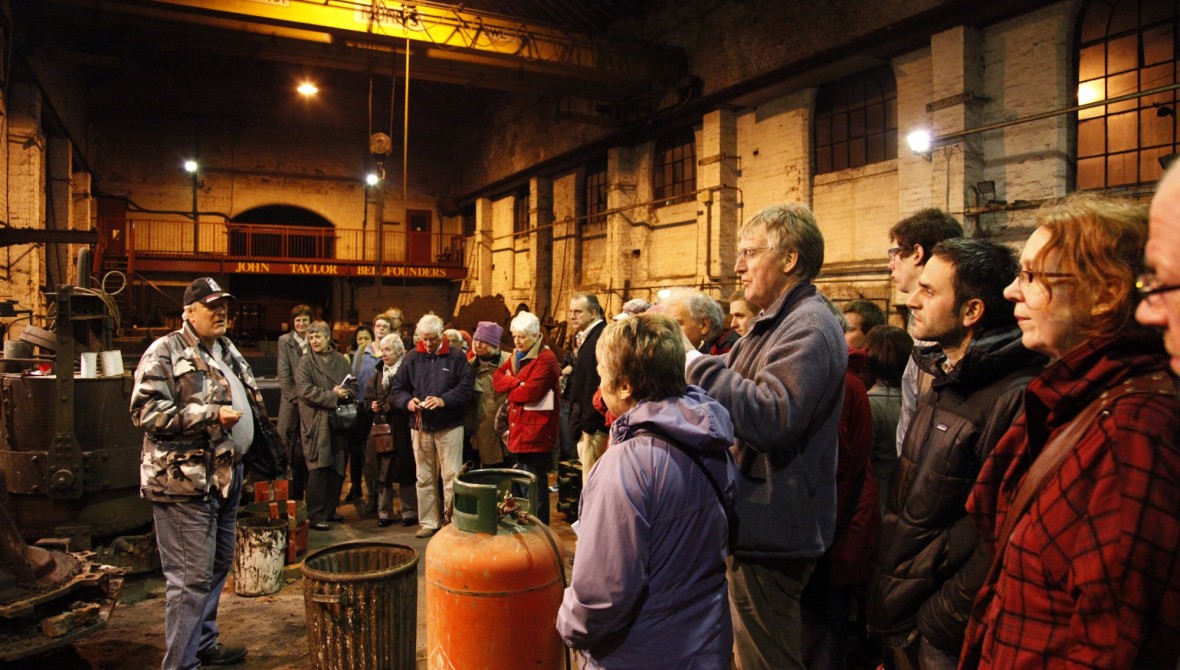Anti-Bell
An investigation into the social power of bells.

(Photo credit: Julian Hughes)

(Photo credit: Julian Hughes)

(Photo credit: Julian Hughes)

(Photo credit: Julian Hughes)

(Photo credit: Julian Hughes)

(Photo credit: Julian Hughes)
Anti-Bell brought together the artist Ruth Ewan with Marek Korczynski, Professor of Sociology of Work in the School of Social Sciences who, along with his Loughborough University colleague Mike Pickering and Emma Robertson from Sheffield Hallam University, was nearing completion on a body of work exploring the social history of music in the workplace. Ewan was interested in the ways that songs were used for both control and resistance, and combined this with her fascination with Loughborough's historical links with the bell through its carillon and the John Taylor Bell Foundry: the UK's last remaining bell manufacturers.
At Ewan's behest, in March 2010 an English church bell manufactured in 1835 was melted at the bell foundry. As the bell melted an audience was led on a tour of the foundry, which touched on the history of the site and the significance of bells in relation to the British Empire. Following the tour of the foundry the audience were invited to witness the pouring of the molten bell metal upon the foundry floor.
The resulting object has been exhibited as a remnant of the event. A 32 page artist’s pamphlet, designed by The 2 Group (linked below) was produced representing the social and political history of bells through a collection of found texts and images. If you would like a physical copy of this please email luarts@lboro.ac.uk.
Ruth Ewan is an artist who lives and works in Glasgow. Her work across text, installation, performance and music explores social movements, resistance, protest and power.

